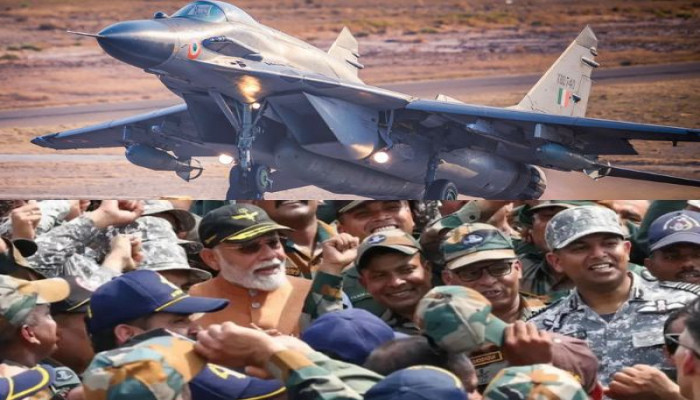India fooled Pakistan’s defences using fake jets during Operation Sindoor
- In Reports
- 07:55 PM, May 17, 2025
- Myind Staff
Operation Sindoor was India’s coordinated military response to the Pahalgam terror attack on April 22, which killed several soldiers. The Indian Armed Forces hit nine terror-related targets in Pakistan and Pakistan-occupied Kashmir, delivering a clear message against terrorism.
The Indian Air Force caught Pakistan’s military off guard not just with its firepower but also with a carefully planned deception. ANI, citing senior defence sources, reported that the Indian Air Force used dummy aircraft that looked like fighter jets. These decoys helped trigger and expose Pakistan’s air defence systems, which were supplied by China.
In the early hours of May 9–10, the IAF struck 11 out of 12 key Pakistani air bases. Before launching real missile strikes, it first sent unmanned target aircraft camouflaged as fighter jets. These dummy aircraft activated Pakistani radar systems. Pakistan mistook them for incoming fighters and responded by activating its HQ-9 missile systems, which revealed their locations.
Pakistan Air Force moved its HQ-9 missile launchers and radars to different areas. Some of these systems were deployed at new locations, but Indian forces detected them once they became active, ANI reported. After identifying these defences, the Indian Air Force followed up with long-range missile strikes. It used BrahMos and Scalp missiles, along with Rampage and Crystal Maze projectiles, in the attack.
India reportedly launched about 15 BrahMos missiles during the operation. The strikes targeted airstrips, hangars and communication infrastructure in Pakistan’s air force network. Defence sources said the attack damaged an airborne early warning aircraft and several long-endurance drones in Sindh. This marked the first known operational use of the BrahMos missile in active combat, sources told ANI.
ANI sources also said the intensity of the strikes on Pakistani air bases led Pakistan to drop its plans for retaliation. With its air defence weakened, Pakistan quickly requested DGMO-level talks. It sought an ‘understanding’ with India to stop further military action.
The mission aircraft were controlled mainly by the Western Air Command and the Southwestern Air Command. Pakistan launched aerial attacks using land attack ballistic missiles, air-launched cruise missiles and unmanned combat aircraft. India countered these attacks using the Russian S-400, MRSAM, Akash, and older air defence systems.
Last week, India and Pakistan announced an immediate ceasefire across land, air, and sea. However, just hours later, drone sightings and explosions were reported in Jammu and Kashmir. Indian security forces activated air defence systems to neutralise these aerial threats.







Comments